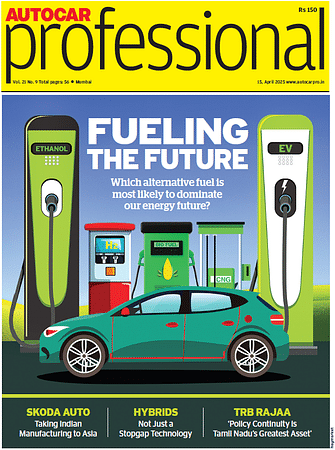Tata Motors stands by ARAI-certified 312km range for Nexon EV
In its reply to a Delhi Transport Commission showcause notice, Tata Motors vouches for Nexon EV's 312km range on a single charge.
UPDATED March 10, 2021 – 9.15pm: A statement issued by Tata Motors said “The Honourable Delhi High Court has issued notice on our writ and granted interim relief by directing a stay against the delisting of Nexon EV from Delhi Government’s eligible list of vehicles. The Honourable High Court has granted time to the Delhi Government to file counter affidavit in the matter.”
In its reply to a showcause notice issued last month by the Delhi Transport Commission seeking the carmaker’s response with reference to a consumer complaint that its Nexon EV failed to meet the company’s specified 312-kilometres range on a single charge, Tata Motors says it stands by its specification.
In its official reply, Tata Motors says: “It is unfortunate to receive this order from the Delhi Transport Commission. We will continue to engage constructively to protect the interests of our customers. The Nexon EV is the only personal segment EV available in the market today that meets the stringent FAME norms. The range at single full charge (312km) for the Nexon EV is basis the certification received from the Automotive Research Association of India (ARAI), which is the official body that independently tests all mass produced vehicles under standard/defined test conditions before they can be offered to customers.”
The truth behind the Tata Nexon EV range controversy
The company adds, “As with conventional vehicles (with IC engines), the actual range achieved in EVs is dependent on AC usage, individual driving style and the actual conditions in which the vehicle is driven. The range achievement is also a function of familiarity with the new technology, and customers report improvements upwards of 10% within 4-6 weeks of familiarity. We have been receiving several positive testimonials from our customers and are encouraged to see them exploring new places with Nexon EV and sharing their experiences. We are extremely confident about the value proposition of the Nexon EV, which since its launch a year ago, has consistently grown in popularity to become India’s largest-selling EV with thousands of families enjoying the pleasure of owning and driving it.”
Delhi government delists Nexon EV from its subsidy scheme
As per a PTI report, the Delhi government, which unveiled a dynamic EV Policy last August and is targeting 500,000 EVs by 2024, has delisted the Tata Nexon EV from its subsidy scheme for EVs. This follows complaints that the eco-friendly SUV failed to meet the specified range on a single charge.
Delhi govt has decided to suspend subsidy on a EV car model, pending final report of a Committee, due to complaints by multiple users of sub-standard range performance. We r committed to support EVs, but not at the cost of trust & confidence of citizens in claims by manufacturers pic.twitter.com/R81S3kH6vT
— Kailash Gahlot (@kgahlot) March 1, 2021
Delhi Transport Minister Kailash Gahlot tweeted: “Delhi govt has decided to suspend subsidy on a EV car model, pending final report of a Committee, due to complaints by multiple users of sub-standard range performance. We r committed to support EVs, but not at the cost of trust & confidence of citizens in claims by manufacturers.”
ALSO READ Tata Nexon EV turns a year old, races towards 3,000 unit sales
RELATED ARTICLES
Hyundai walks the eco talk with biogas plant, material recovery plant in Gurugram
Operational since October 2022, the facility targets sustainable waste management in Gurugram by undertaking scientific ...
Rajiv Bajaj reappointed MD and CEO of Bajaj Auto for five-year term
Bajaj Auto’s Board of Directors has approved the re-appointment of Rajiv Bajaj as the company’s MD and CEO for another f...
JSW MG Motor launches Comet EV Blackstorm edition
The key highlights of the Comet EV Blackstorm, which is now the top-end variant, are its ‘Starry Black’ exterior along w...






 By Autocar Professional Bureau
By Autocar Professional Bureau
 01 Mar 2021
01 Mar 2021
 20013 Views
20013 Views


























